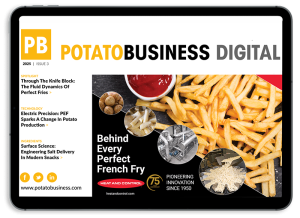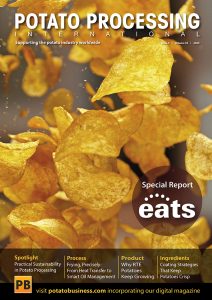Royal HZPC Unveils Hybrid Potato Breakthrough for African Markets

Royal HZPC Group is taking hybrid potato breeding to the forefront at this year’s Potato Days, marking a milestone in what the company calls the “Resilience Revolution.” Under the new name NOVA, the group plans to introduce a series of hybrid potato varieties worldwide in the coming years.
The company has already submitted its first hybrid variety for registration in Kenya—an important step for smallholder farmers in the region. “Although we cannot export to Kenya, farmers there will soon have access to certified, clean, and strong seed material,” said Hans Huistra, CEO of Royal HZPC Group.
Twice as Fast – and Grown From Seed
“A hybrid potato tastes and looks just like the potato we all know,” Huistra explained. “The difference lies in the breeding technique. With the right genetics, hybrid breeding allows us to develop new varieties faster. For example, when a new disease emerges, resistance can lead to a new hybrid variety up to twice as fast as with classical breeding. Hybrid potatoes can also be grown from seed—an innovation that opens new markets.”
From Impossible to Breakthrough
Hybrid breeding has long been used successfully in crops such as maize and tomato, but the potato’s complex genetics made it an elusive goal. “For potatoes, it seemed impossible due to genetic limitations around self-pollination,” said Ad Vrolijk, Program Leader Hybrid Breeding at Royal HZPC Group.
“In 1999, Japanese scientist Hosaka published a discovery of a gene in a wild potato that enables self-pollination. Eventually, we succeeded in crossing this gene into existing varieties. Since 2011, our research team has invested heavily in hybrid breeding. And now, it’s paying off.”
Focus on Africa and Asia
Hybrid breeding offers the greatest immediate potential in markets where farmers have limited access to high-quality seed potatoes. In Kenya, only about 10% of the 800,000 small-scale potato farmers currently have access to certified seed material, a gap that directly affects yields and food security in disease-prone regions.
“In Kenya, late blight is a year-round problem,” Vrolijk explained. “Crop protection products are hard to obtain, expensive, or misused. Many farmers spray little or not at all. That’s why we also test without crop protection. Our hybrid variety, codename D23HY2515, matches the yield of Kenya’s leading variety and is the only one that maintains its performance under high late blight pressure, thanks to its dual resistance.”
Seed Potatoes Remain Essential
While hybrid breeding is advancing rapidly, tuber-based propagation will remain vital for achieving high yields. “Hybrid breeding is advancing rapidly, but seed potatoes remain essential,” Huistra said.
Vrolijk added: “In Kenya, farmers using hybrid potatoes still follow the traditional process. Especially because plants from seed need more time to form large tubers. Farmers want to reuse their land after 100 days for another crop.”
Hybrid Potatoes in Europe?
It will take time before hybrid potatoes reach the European market. “Creating pure parent lines—a crucial part of hybrid breeding—is an intensive and long-term process,” said Vrolijk. “And the standards in Europe and North America are higher. Here, we’ve worked with high-quality seed material for decades. At Royal HZPC Group, we’ve been breeding for over 125 years—you don’t catch up with that overnight.”
“In Kenya, we’re making a difference because access to quality seed material is limited. But it’s only logical that hybrid potatoes will eventually play a role in Europe too.”
Making a Difference in Food Security
Huistra concluded: “All in all, hybrid breeding promises a bright future for potato cultivation. Especially because it enables clean and strong seed material to be made available to small-scale farmers in selected regions. That can make a real difference in food security. And that’s what drives us.”

















